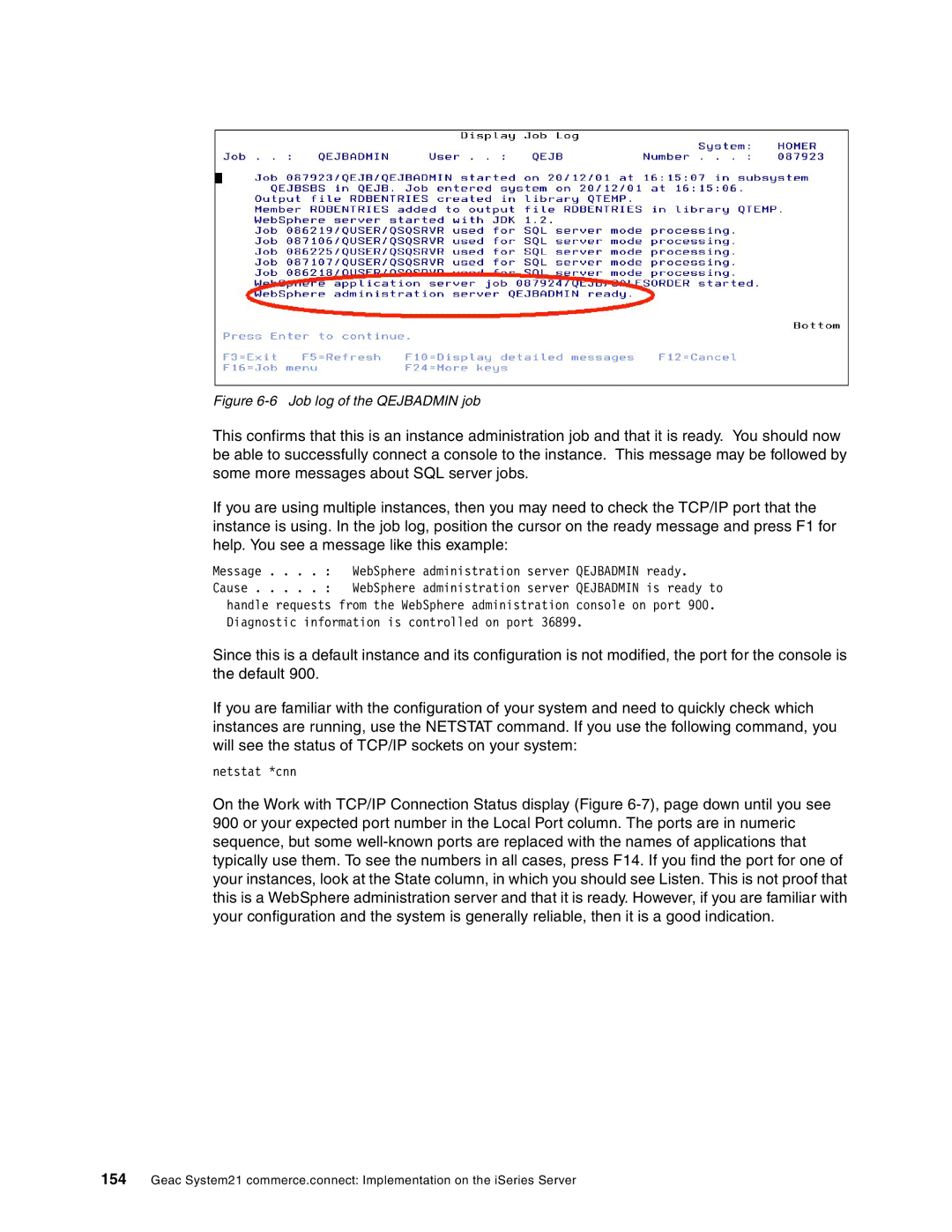
Figure 6-6 Job log of the QEJBADMIN job
This confirms that this is an instance administration job and that it is ready. You should now be able to successfully connect a console to the instance. This message may be followed by some more messages about SQL server jobs.
If you are using multiple instances, then you may need to check the TCP/IP port that the instance is using. In the job log, position the cursor on the ready message and press F1 for help. You see a message like this example:
Message . . . . : WebSphere administration server QEJBADMIN ready.
Cause . . . . . : WebSphere administration server QEJBADMIN is ready to handle requests from the WebSphere administration console on port 900. Diagnostic information is controlled on port 36899.
Since this is a default instance and its configuration is not modified, the port for the console is the default 900.
If you are familiar with the configuration of your system and need to quickly check which instances are running, use the NETSTAT command. If you use the following command, you will see the status of TCP/IP sockets on your system:
netstat *cnn
On the Work with TCP/IP Connection Status display (Figure
154Geac System21 commerce.connect: Implementation on the iSeries Server
